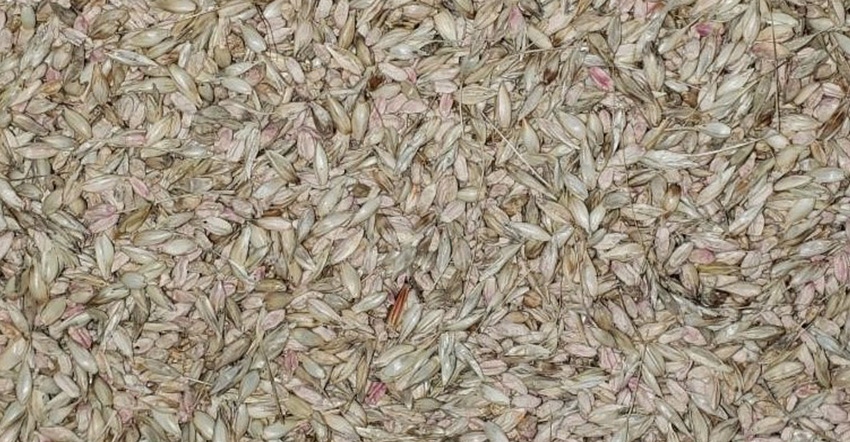July 31, 2019

Like many other states across the U.S., Kansas slogged through what felt like endless rainfall and abnormally cool temperatures in the spring and summer of 2019 — conditions ideal for the development and rapid spread of a variety of fungus-related diseases, most notably fusarium head blight.
Head scab can cause significant yield loss and grain quality reduction, and it can be detrimental to seed germination. Unfortunately, the disease often goes undetected before it's too late to control in the field, say experts with the Kansas Wheat Alliance, the commercialization arm for varieties developed by breeders at K-State.
Because controlling head scab disease pressure in the field can be unachievable, it's critical to use effective practices after harvest to reduce the impact of infected seed, according to Eric Fabrizius, associate director and laboratory manager with the Kansas Crop Improvement Association.
Correctly identifying head scab-infected wheat will help with future management decisions. In the field, an entire wheat head or as little as only one spikelet may appear prematurely whitened or bleached. Head scab may also cause dark discoloration to the stem area where individual spikelets are attached. Once infected, the spikelets and glumes may start to show a pinkish, salmon-colored mass of spores he says.
Seed infection, on the other hand, is not always visible to the naked eye.
"It's important to know that, if the disease is infecting a field, there are going to be various levels of infection in the seed," Fabrizius says.
For example, he says some seed will have extreme infection. These kernels are dead with no chance of recovering and will appear white, chalky and shriveled. There is occasionally some pink discoloration to them. These are called tombstone kernels.
"When you have tombstone kernels, that means along with it you will have other seed that's going to look perfectly normal, but it's going to have some infection in the seed coat," Fabrizius says.
Seed that has infection, but does not show signs, is generally still alive and may become an issue for growers when planted. As the infected seed starts to germinate, the fungus begins to grow, too, Fabrizius says. It then becomes a race of which is going to win — the seedling or the fungus.
For growers who plan to save seed for fall planting, it's critical to take precautions to make sure you are eliminating the chance of the disease resurfacing and getting the most out of the seed as possible, he advised.
A grower with head scab-infected seed should have a professional germination test done from a trusted laboratory, such as Kansas Crop Improvement Association. KCIA will look at individual seedlings and test them to let you know what level of quality your seed has.
Growers also need to make sure they have their seed cleaned well, and if possible, run the seed over a gravity table. Doing so will remove the lighter, dead seed. It is not uncommon to clean out 30% to 50% of the seed when trying to remove head scab-infected kernels. This is key to improving test weights and germination of the seed.
Fabrizius says that time is also on the grower's side.
"The fungus that is living in that seed does not have good longevity, so some of that light infection in the seed coat is going to die away just over time. Now, part of that is storage temperature. If it's stored at 75 degrees (F) it's going to die off slower than if it's stored at 90 degrees," he says.
Fungicides seed treatments can also help infected seed.
"Fungicide seed treatments benefit the seeds that have a light infection and are still alive, but it can't bring those that are heavily infected back from the dead," Fabrizius says.
Your best chance at having healthy, viable seed is buying new, certified Seed each year. Preventing the fungus from reoccurring should be at the top of every grower's agenda, and that can be done by simply not saving your head scab-infected seed. When you buy certified Seed, you can be confident that your seed has high varietal purity, high physical quality, high germination and maximum yield potential.
The cost of cleaning, seed treatment and testing, with the risk of your seed being non-usable, can make the decision to buy seed easier.
To learn where to buy quality, certified wheat seed, producers can visit the Kansas Wheat Alliance website. Zenda and Everest, two KWA varieties, have some of the best scab tolerance to help prevent the possibility of quality and yield loss due to the disease.
Source: Kansas Wheat Alliance, which is solely responsible for the information provided and is wholly owned by the source. Informa Business Media and all its subsidiaries are not responsible for any of the content contained in this information asset.
You May Also Like




